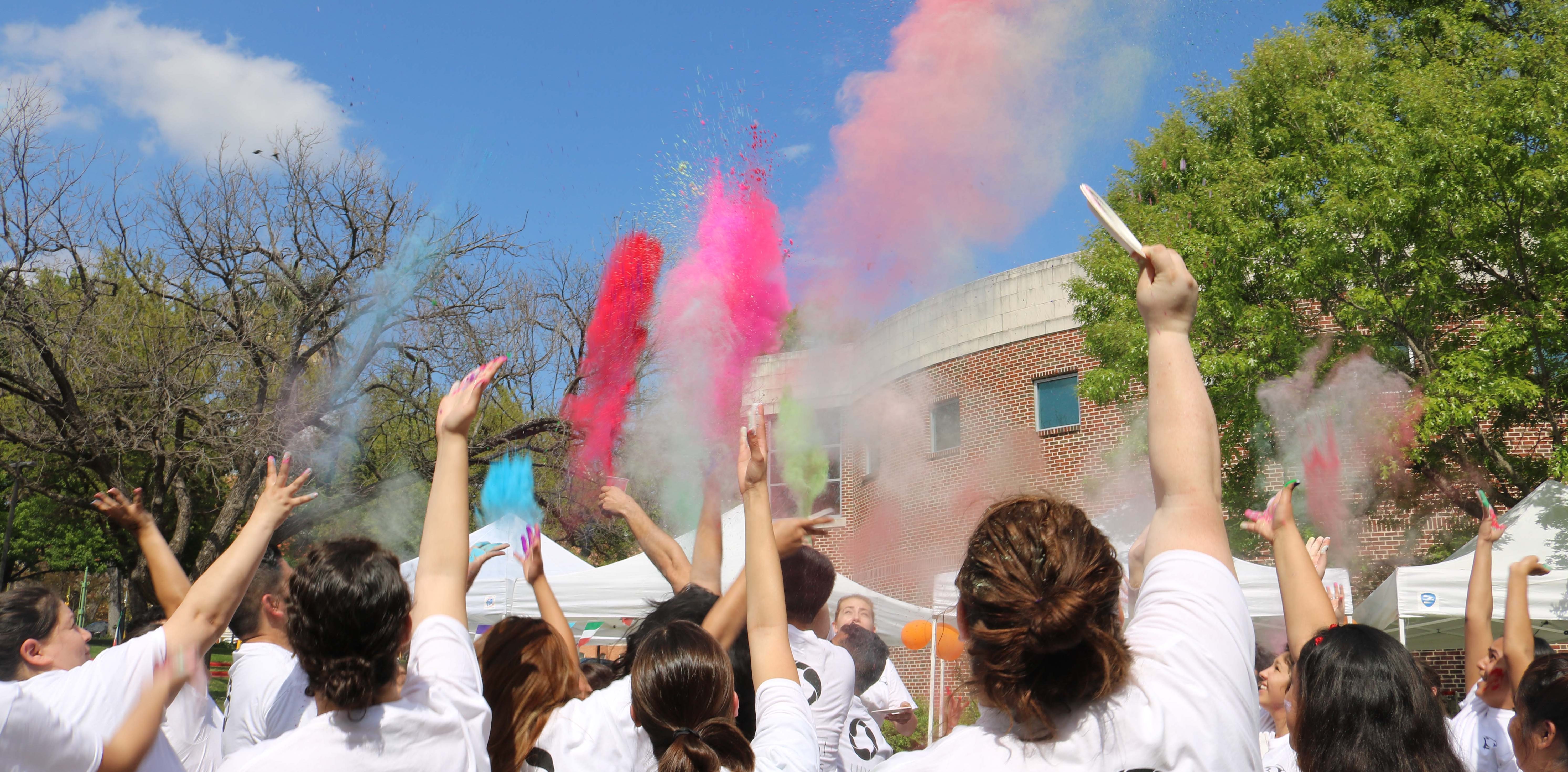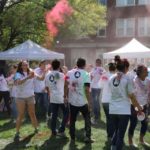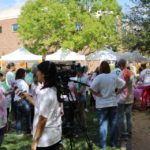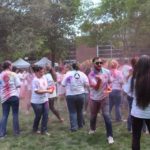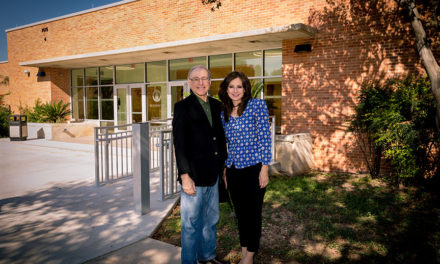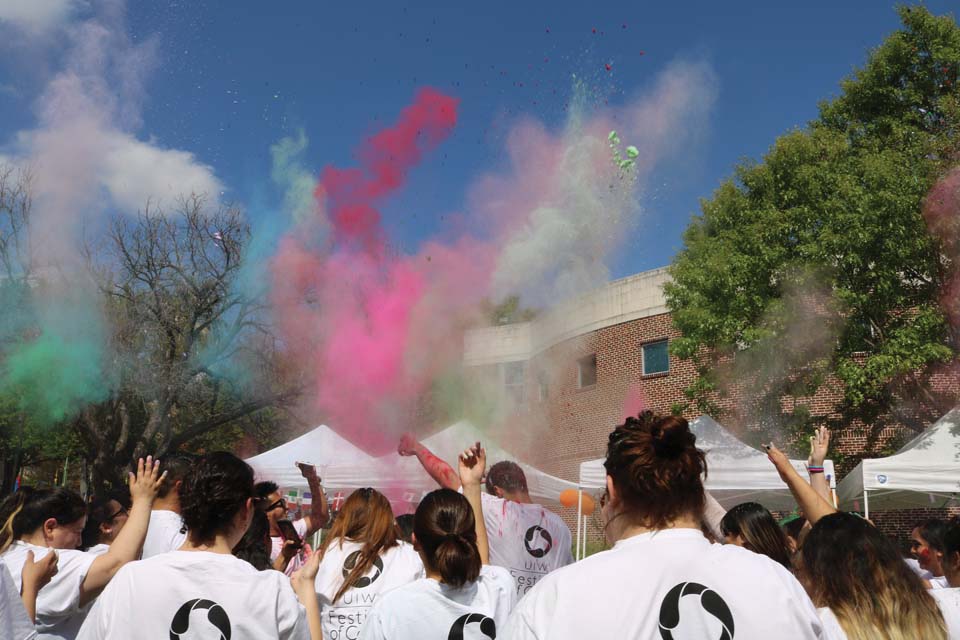
Students throw dye to celebrate the coming of spring.
When Selcuk Mutlu had the chance to obtain his graduate degree in the United States, he jumped at the prospect of exploring new and different cultures. Mutlu moved to San Antonio in 2014 from his homeland in Turkey to pursue a graduate degree in organizational development from the University of the Incarnate Word.
As a graduate assistant in UIW’s Office of International Student and Scholar Services, Mutlu had the unique opportunity to help plan the university’s 5th Annual Festival of Colors, which was held on campus in March. The event, a collaborative effort between over a dozen campus and community organizations, celebrated the Hindu spring festival Holi, also known as the Festival of Colors.
“The Festival of Colors represents that life itself is colorful, not black and white. Our cultures are different and should be celebrated,” he said. “Life is as boring or exciting as you make it and I feel fortunate to have helped with this event. My hope is that someday we would be able to open it up to the entire San Antonio community and not just for students and their friends. I would love to see more people have the chance to learn about all these different cultures firsthand.”
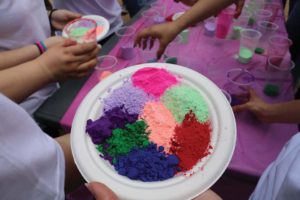
Students prepare dye for color throwing.
The event has grown in popularity every year, expanding with vendors who offer fair trade items for sale, live music, dance performances and, of course, the Holi color throwing, noted Sheena Connell, assistant director with the Office of International Student and Scholar Services.
Holi color throwing festivities included UIW students covering each other with multi-colored powder. Afterwards, participants displayed a variety of colors from head to toe.
“It started off with just the color throwing, but as the years progressed, we started adding more activities and now it’s almost a full-day event,” Connell said. “This year, we had so many cultures represented, including Latin and South America, Europe, the Middle East, South Asia, Africa, East Asia and more.”
Co-hosted by Campus Life, the Festival of Colors celebrates the rich diversity on campus, which is important for UIW because international students account for 27 percent globally of the current student population.
“Celebrating diversity on campus is vital because not only do you have a chance to understand different cultures, it not only enriches you as a student, but as a person, as well,” Connell added. “Currently, 69 different countries are represented on the UIW campus, with our largest populations coming from Mexico and Saudi Arabia.”
Priyangana Risal, international student advisor for the Office of International Student and Scholar Services, says Holi is celebrated all over Southeast Asia.

Connell (center) takes part in the festival.
“I’ve been fortunate to have celebrated Holi in Nepal. We put colors on people’s faces; rub color in each other’s hair and hands. Colors bring happiness to people,” Risal said. “Back in India, sweets are made, along with colorful drinks. We have bonfires. We also put colors in water and even shoot water guns filled with colors at each other. Back home, it’s usually a two-day event.”
A student advisor at UIW for more than eight months, Risal is also working on her graduate degree in business, hoping to graduate by May 2017.
“The Festival of Colors brings our students together,” she said. “It’s for every religion and every culture. Forgiveness is the most important part of the ceremony. Laughter, joy and happiness are the main reasons we celebrate. We are destroying evil and thinking of ways to bring happiness to people. We’re also commemorating friendship, love and family.”
Other participating university organizations included International Affairs, Study Abroad, the Ettling Center for Civic Leadership, the Saudi Student Club and Asian Culture Club. Food was provided by local food truck Zoe’s Kitchen and community organizations such as Catholic Charities Archdiocese of San Antonio participated, among many others.
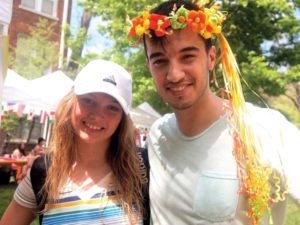
Mutlu (right) with fellow UIW student Dasha Makeeva at Festival of Colors.
Risal said hosting events like these on campus are significant because it teaches everyone tolerance, understanding and acceptance of other people and cultures.
“Sometimes we are so busy in our lives, we don’t make time to learn about different cultures and their rich traditions,” she explained. “Events like the Festival of Colors allows students, faculty and staff to research each and every culture for themselves, up close and personal. It lets them participate in unique ceremonies, music, dance and other things from different countries from around the world. It’s a time to embrace each other’s differences.”
By Rebecca Esparza ’99 BBA ’03 MBA

